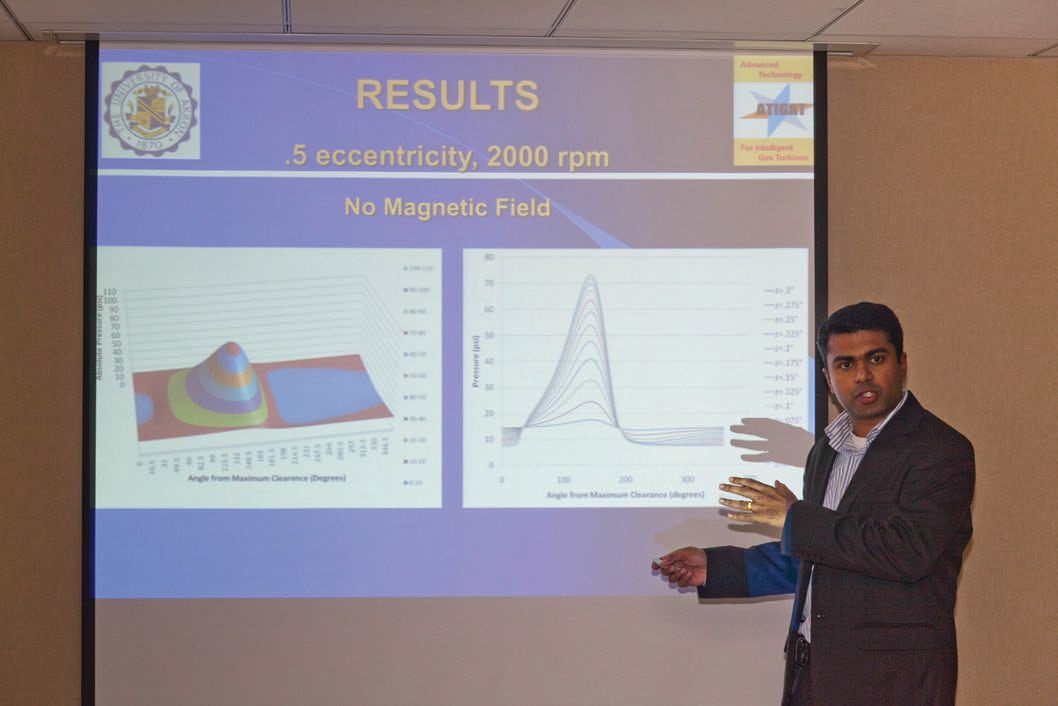Think you know the IJTC?
Jerry P. Byers | TLT President's Report September 2012
There’s more to this unique research event than you suspect.

About 200 papers are being presented at this year’s IJTC by participants from universities, industry, research institutes and government laboratories.
PERHAPS YOU ARE A BIT LIKE ME. You have attended the STLE annual meeting in May fairly regularly, but for some reason just have not gone to the October International Joint Tribology Conference (IJTC for short). Perhaps your company only lets you attend one meeting per year, or perhaps you just thought there wouldn’t be anything of interest at the fall conference. After all, the May meeting has a larger number of attendees, more exhibits and more presented papers.
If this is what you have been thinking, you are not alone. However, in recent years I have been able to attend some of the IJTC meetings and have a few observations I would like to mention. First, let me give a little background information.
The reason it is called a “joint” tribology conference is that it is cosponsored by STLE and ASME’s Tribology Division, and the event goes back more than 50 years. This year the meeting is at the Westin in downtown Denver, Colorado (USA), Oct. 8-10. It is called “international” because people come from more than 20 countries to attend this conference, and the percentage of international participants is about double compared to STLE’s Annual Meeting & Exhibition. Around 200 papers are being presented at this year’s IJTC by participants from universities, industry, research institutes and government laboratories.
The particular topics for the IJTC vary from one year to the next, and this year’s lineup features a diverse lineup of 13 technical tracks. This year presentations are being solicited on:
1.
Nanotribology (friction and wear at atomic and molecular scales)
2.
Biotribology (everything from artificial joints to personal care products)
3.
Engineered Surfaces (altering the properties of a surface to reduce degradation)
4.
Boundary and Thin Film Lubrication (lubricant additives and coatings)
5.
Fluid Film Lubrication (fluid and gas film bearings and seals)
6.
Machine Components Tribology
7.
Contact Mechanics
8.
Magnetic Storage Tribology
9.
Wind Turbine Tribology
10.
Symposium on Condition Monitoring
11.
Symposium on Biomimetics & Green Tribology (biomimetics refers to surfaces that repel water and dirt as in the “lotus effect” or exhibit the “gecko effect” of being able to adhere to smooth surfaces).
12.
Student posters, which are not restricted to the above topics.
13.
STLE-Chinese Tribology Institute Symposium.
The IJTC keynote speaker on Tuesday is Frankie Flood, assistant professor at the University of Wisconsin in Milwaukee where he is currently co-area head in Jewelry and Metalsmithing. His topic is “Material, Form & Function: The Art of Tribology,” and he’ll discuss the use of such industrial processes as casting, machining, stamping, anodizing and powder coating to create one-of-a-kind functional objects and their place in a world of mass production. One example is his unique pizza cutters—each a one-of-a-kind work of art that at the same time is utilitarian. This promises to be a very interesting talk!
My observations about the IJTC are that the presenters tend to be younger, and the presentations slightly more research-oriented and theoretical than at the May meeting. The IJTC is a showcase for the latest in cutting-edge and emerging technologies.
Speaking as someone from industry who is concerned with practical applications, this conference gives me the chance to think outside the box. I also get to meet new, young scientists who could make excellent future employees. What industry professional would pass up such great benefits?
So change your paradigm and give some thought to attending IJTC 2012. I’ll look forward to seeing you there.
 Jerry Byers is manager of research and development for Cimcool Fluid Technology in Cincinnati. You can reach him at jerry_p_byers@cimcool.com
Jerry Byers is manager of research and development for Cimcool Fluid Technology in Cincinnati. You can reach him at jerry_p_byers@cimcool.com.